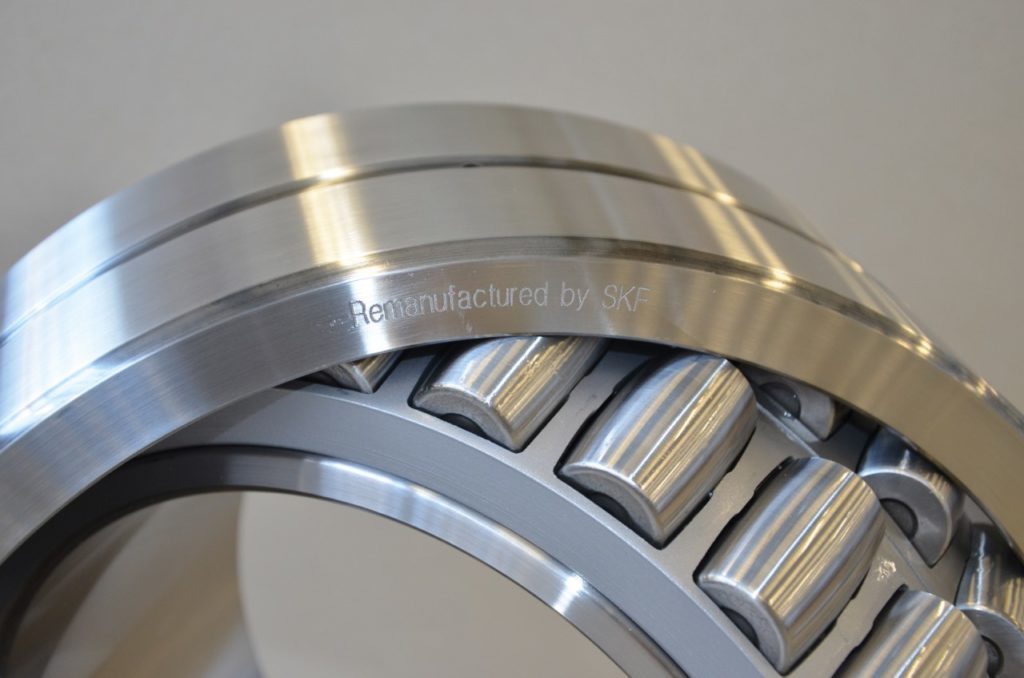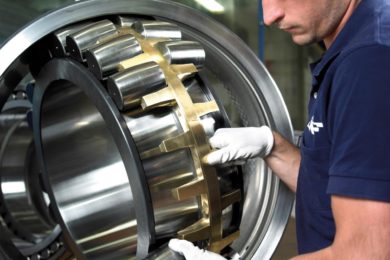At a time when the world is looking to limit its energy usage and impact on the climate, pressure is mounting on the mining industry, worldwide, to play its part in the transition to a net zero economy, Alan Stewart* writes.
The products and services we produce need to be sustainable; they need to be produced through economically-sound processes that minimise negative environmental impacts while conserving energy and natural resources.
Individual bearings use relatively little energy, but as they are in such widespread use, and are also one of the most frequently replaced machinery components, the sustainability of the bearings you use matters. By applying the three Rs waste hierarchy – Reduce, Reuse, Recycle – to bearings, we can make a genuine difference.
Reduce
Is it possible to reduce the number of bearings used? Well, you can’t simply not use a bearing where one is required, but, by extending their life, you can reduce the total number of bearings used during that machine’s lifespan.
To ensure longevity, select the right bearing for the task at hand. There’s an incredibly wide range to choose from, many of which have been created for use in mines and other similarly demanding environments. SKF Explorer Spherical Roller Bearings, for example (pictured), are ideally suited for operation in harsh conditions, including mining. They help cut costs and extend bearing service life thanks to their high radial and axial load-carrying capacity and low operating friction. They have recently been upgraded to feature even higher quality steel and an improved heat treatment, for an even better service life performance. A specialist version for vibratory applications, such as vibrating screens, is available, which is proven to last twice as long as other screen bearings and also operate at lower temperatures.

It’s important to do your homework or ask for advice on the bearing best suited to your specific needs.
Not only should the bearing be the right type, but it should also be of a good quality. Opting for a low cost, unrecognisable brand not only risks premature failure and costly downtime, but it may also lose performance over time, which almost always results in wasted energy as most systems keep drawing power despite the drop or lack of output. Every second of wasted production equates to wasted energy and impacts on a days’ production targets.
Ensuring the product is correctly fitted also has a part to play. Misalignment can lead to friction and vibration which can significantly increase energy consumption, plus the risk of premature failures. Alignment tools are readily available which allow you to increase machine reliability through easy to use and accurate alignment. Other options include selecting products that don’t require realignment, such as SKF Cooper Split Spherical Roller Bearings that do not require the drive coupling or the cantilevered drive to be dismounted to replace the bearing; these bearing types are easily and safely replaced in-situ. This also greatly reduces the safety risk to workers in mines and makes for faster maintenance, reducing mean time to repair by two thirds.
Reduce the amount of lubrication you use by using sealed, re-lubrication-free bearings such as SKF’s Three-Barrier Solution. In mining environments, open bearings quickly become damaged from ingress of dirt. SKF’s Three-Barrier Solution (ideally suited to conveyor systems) consists of a bearing housing – with labyrinth S seals, a lubricant to act as a contamination barrier and sealed spherical roller bearing. These three barriers protect the bearing from contaminants, leading to extended bearing service life which is, on average, three times longer than standard open bearings.
Sealed bearing units also help to reduce lubrication usage. Alternatively, automated lubrication systems can be installed to ensure the correct amount of lubrication is applied, reducing wastage.
Reuse
When it comes to reuse, you may be surprised to hear that bearings can be remanufactured, which can significantly prolong bearing service life, as well as reduce cost and lead times. A large variety of bearing types can be remanufactured, including backing bearings, caster bearings, large sized bearings, slewing bearings and housings. Bearing remanufacturing can significantly reduce carbon emissions, consuming around 10% of the energy of making a new one. By extending bearing service, remanufacturing avoids the scrapping of components and wasteful use of natural resources.
In addition to bearings remanufacture, lubricants can also be reused in some cases. SKF’s RecondOil, for example, removes contaminants from used oils, and returns them to a cleaner, usable and high-grade state. Compared to a traditional, linear use, regenerating the oils allows for a significant decrease of CO2 emissions.
Recycle
While the amount of steel per bearing is on the decline due to better bearing design and more efficient manufacturing methods, that steel still has a value as scrap. Not all bearings are easy to recycle though and normally only parts of them can be recycled. Check with the manufacturer.
Beyond the product
The three Rs are a good starting point to help improve the sustainability of your bearings’ usage, but you can’t apply sustainability to the product in isolation. It’s important to take into account every aspect surrounding that product, including the manufacturer and its suppliers and distributors. Sustainability should encompass the use of raw materials; the manufacturer’s factory processes and utilisation of those materials; the amount and type of energy used to make the bearings; distribution and transportation. Does the manufacturer deploy the IS0 14001 Environmental Management System and the ISO 50001 Energy Management System across all of its sites, for example?
Reducing wastage when it comes to bearings is not only good for the planet, but makes good business sense. A bearing that performs well over a long period of time is a bearing that won’t slow your machinery down and won’t lead to expensive unplanned maintenance and downtime. Applying the three Rs to bearings is a good investment in the future, whichever way you look at it.
*Alan Stewart is Brammer Buck & Hickman Bearing Product Manager – SKF Products










